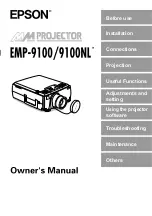
English
English
EN-52
EN-53
What you should know about blood pressure
D
Operating the device
C
To delete individual measured values, recall the measured value
you wish to delete.
Press the Memory button again and hold
down until the display firstly flashes and is
then replaced with dashes.
To delete the entire memory, retrieve the
respective average value (A), press the Mem-
ory button again and hold down until the
average value firstly flashes and is then re-
placed with dashes.
Deleting data
You can switch between the two memories by pressing Memory
button 1 or 2.
The stored data remain visible in the display for around 30 sec-
onds. The device then switches itself off.
The circulatory system has the important task of supplying all
organs and tissues in the body with sufficient blood, and of re-
moving metabolites. The heart does this by contracting and ex-
panding at a regular rhythm of around 60-80 times per minute.
The pressure created by the blood flow on the artery walls when
your heart contracts is referred to as systole. The pressure in
the subsequent relaxation phase when the heart fills with blood
again is referred to as diastole. In your daily measurement, you
will measure both values.
Our blood pressure responds to internal and external influences
like a sensitive measuring instrument. Affected by mental, physi-
cal and environmental influences, it varies all the time and never
remains constant.
Reasons for fluctuating blood pressure values can be: moving,
speaking, eating, consuming alcohol or nicotine, nervousness,
inner tension, emotions, room temperature, recent urination
or bowel movements, environmental influences such as move-
ments and sounds, etc. Even changes in the weather and climate
can have an effect on your blood pressure.
This explains why values measured at the doctor are often higher
than those you obtain at home in your usual environment.
Even the time of day has an effect on your blood pressure. The
values are at their highest during the day. In the course of the af-
ternoon and in the evening, they drop slightly. They are low while
you are sleeping, but rise again relatively quickly once you get up.
1. The systolic and diastolic blood pressure value
2. Why you measure different values
3. Why should you measure blood pressure regularly?
















































